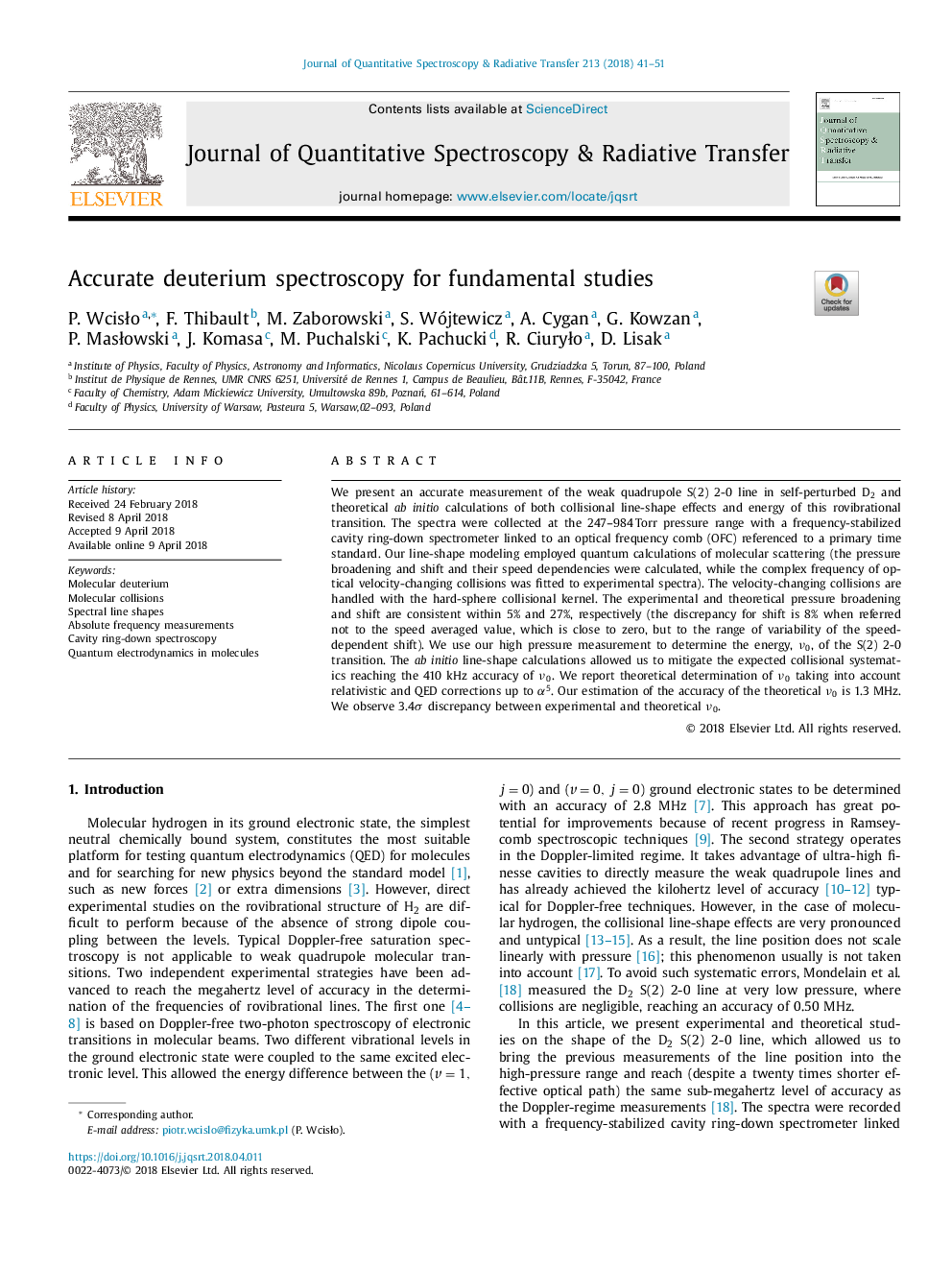| Article ID | Journal | Published Year | Pages | File Type |
|---|---|---|---|---|
| 7845948 | Journal of Quantitative Spectroscopy and Radiative Transfer | 2018 | 11 Pages |
Abstract
We present an accurate measurement of the weak quadrupole S(2) 2-0 line in self-perturbed D2 and theoretical ab initio calculations of both collisional line-shape effects and energy of this rovibrational transition. The spectra were collected at the 247-984â¯Torr pressure range with a frequency-stabilized cavity ring-down spectrometer linked to an optical frequency comb (OFC) referenced to a primary time standard. Our line-shape modeling employed quantum calculations of molecular scattering (the pressure broadening and shift and their speed dependencies were calculated, while the complex frequency of optical velocity-changing collisions was fitted to experimental spectra). The velocity-changing collisions are handled with the hard-sphere collisional kernel. The experimental and theoretical pressure broadening and shift are consistent within 5% and 27%, respectively (the discrepancy for shift is 8% when referred not to the speed averaged value, which is close to zero, but to the range of variability of the speed-dependent shift). We use our high pressure measurement to determine the energy, ν0, of the S(2) 2-0 transition. The ab initio line-shape calculations allowed us to mitigate the expected collisional systematics reaching the 410 kHz accuracy of ν0. We report theoretical determination of ν0 taking into account relativistic and QED corrections up to α5. Our estimation of the accuracy of the theoretical ν0 is 1.3 MHz. We observe 3.4Ï discrepancy between experimental and theoretical ν0.
Keywords
Related Topics
Physical Sciences and Engineering
Chemistry
Spectroscopy
Authors
P. WcisÅo, F. Thibault, M. Zaborowski, S. Wójtewicz, A. Cygan, G. Kowzan, P. MasÅowski, J. Komasa, M. Puchalski, K. Pachucki, R. CiuryÅo, D. Lisak,
